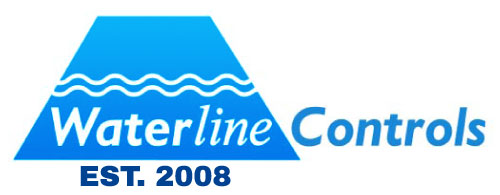SENSOR TEST
Sensor Test Instructions
Step 1: Pull the sensor out of the tank and see if the error condition clears.
- If the condition clears, proceed to Step 2.
- If the condition does not clear, proceed to Step 3.
Step 2: Dip the sensor into the tank outside of any static wells.
- If the condition clears, there may be an issues with the static well. Cut down the length of the static well to expose the White rod, install the sensor and retest.
- If the condition does not clear, proceed to Step 3.
Step 3: Perform the Sensor Bucket Test. If you cannot perform a Sensor Bucket Test, then perform a Sensor Probe Continuity Test.
- If the condition clears and the system works as expected, there may be environmental issues with the tank.
- If the condition does not clear, perform the Control Panel Test.
Sensor Bucket Test
Remove the sensor from the tank and insert the probes into a single bucket of water. While lowering and raising the sensor probes in the water, watch the LED indicators on the control panel to determine if the system is working correctly. For example, if there is no water on the Brown Low Alarm probe, then the Fill and Low Alarm LEDs should be on.
Sensor Probe Continuity Test
NOTE: The sensor cannot be tested with a continuity meter while the probes are in water. This is a false test.
- Remove all sensor wires from the terminal block in the control panel.
- Completely remove the sensor from the water.
- Use a Volt/Ohm meter between the sensor wire and end of the corresponding sensor probe.
- For example, test between Black sensor wire and Black probe.
- Test each respective sensor wire and probe colors.
- If any of the wire/probe sets tests “OPEN”, then inspect the length of the sensor cable and splice points for damaged or faulty connections. If no visible damage is found, the sensor will need to be replaced.
- If unable to reach between sensor wire and probe, twist wire ends together in pairs (Black-Brown, Red-White, etc.) and test between the corresponding probes. The wire-pair combination does not matter, just ensure the wire pairs belong to a corresponding probe. For example, if there is no Blue probe, then do not include the Blue wire in the test. For example, if you connect the Black sensor wire to the Brown sensor wire, then measure the continuity between the Black and Brown probes. The continuity between probes should be about 1-2 ohms. A significantly greater reading would indicate a break in the sensor wire and would require replacing the sensor.
PROUDLY MADE IN THE U.S.A. 
All of our liquid level controls and liquid level sensors are assembled right here in the U.S.A.
where we monitor every step of the process.
NOT SURE WHAT YOU NEED? JUST CALL BECAUSE WE’RE HERE TO HELP! 480-905-1892
We offer products comparable to the products offered by the above companies. See our website pages for further information on the products. The tradenames and trademarks in this page are owned by their respective companies or are the same name as the company. They are mentioned for comparison purposes only. They are in no way affiliated with System Dynamics, Inc or WaterLine Controls.




